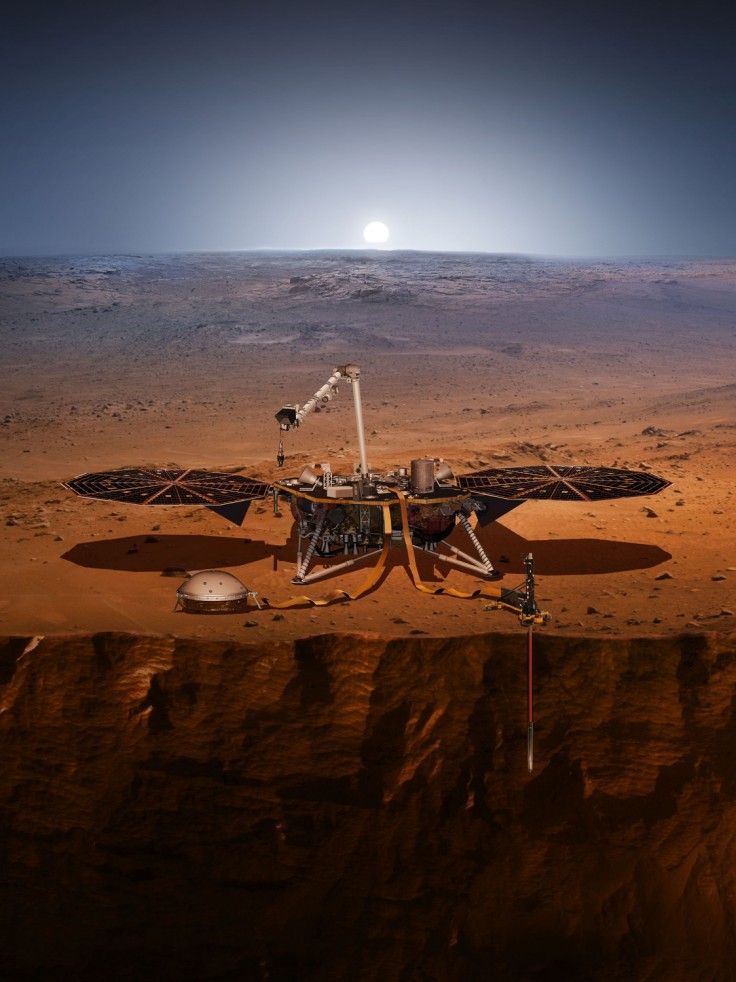The Mars InSight Mission is an incredible achievement and a clear milestone in humanity's exploration of the final frontier despite it being the eighth time humanity has ever landed a robot on the surface of Mars.
The robot in question, the Mars Insight lander, is humanity's gateway to knowing more about the Red Planet.
From learning about marsquakes, which are Mars' equivalent of an earthquake, to knowing more about the planet's core, the lander has provided us with exciting information.

As a tribute to our little hero on Mars, here are some facts about the Mars InSight lander that you may find interesting.
What Does the Name 'InSight' Mean?
InSight, according to Forbes, is the acronym for Interior Exploration using Seismic Investigations, Geodesy, and Heat Transport.
For a mini fun fact, Geodesy is the branch of mathematics dealing with the shape or an area of the Earth or a planet or a large portion of it.
InSight Mission Overview
The InSight Mars lander's mission is to use its various instruments to analyze the thickness and structure of Mars' crust, investigate the thermal state of the planet's interior, and measure the rate of internal seismic activity and the rate of meteorite impacts on the planet.
Lockheed Martin Collaborated With NASA To Develop the InSight Mars Lander
Lockheed Martin collaborated with NASA's Jet Propulsion Laboratory (JPL) to develop and design the InSight Mars lander, per its official website.
In fact, the company is responsible for the complete spacecraft system, which consists of the lander's cruise stage, aeroshell, and the lander itself.
Lockheed Martin has been developing and creating landers since 1976 when it and the JPL first collaborated to create the Viking lander used in the first Mars landing missions in the same year.
The InSight Mars Lander Houses Four Main Instruments
According to NASA's page on InSight's Science Tools, the InSight Mars lander has three primary instruments.
The SEIS is InSight's seismometer that measures Marsquakes while HP3, serves as the lander's underground thermometer which is used to measure the heat pulses generated by the planet's core. RISE, meanwhile, is the lander's radio science instrument used to measure the wobble of Mars' North Pole as it makes its way around the sun.
The lander also has an Instrument Deployment and Instrument Context Camera that offers a 360-degree panoramic view of Mars inf full color, providing a "fisheye" field of view of the lander's workspace.
1,313 Marsquakes Detected and Counting
Since its landing on the Red Planet on November 26, 2018, the InSight Mars lander was able to detect more than 1,313 Marsquakes or earthquakes that happen on Mars.
In fact, one of its latest Marsquake detection was described by NASA as a magnitude 5 quake, or as a "monster quake."
It Is the First Interplanetary Launch From the West Coast
The National Aeronautics and Space Administration (NASA) sent many landers from Earth to Mars. However, almost all of them came from the Kennedy Space Center in Florida due to how easy it is to get to other planets from the East Coast.
Read More : NASA's James Webb Space Telescope Close to Commissioning, Delivers 'Sharpest Infrared Images Ever'
When the InSight Mars lander was launched, NASA did so at the Vandenberg Air Force Base in California because of the Atlas V-401 rocket, which could send a spacecraft to Mars even from the West Coast.
The Vandenberg Air Force Base in California was also chosen to be InSight's launch venue due to its availability during InSight's launch period, NASA said in an announcement.
NASA's Antennas Tracks InSight From Earth
Unlike NASA's Mars rover, Curiosity and Perseverance, InSight is meant to be a stationary lander, similar to moon landers used by astronauts in the Moon missions.
Despite being in one location on Mars, InSight still transmits regular updates to NASA's Deep Space Network — a set of antennas that communicates with spacecraft across the solar system. Thanks to this, InSight's location will be tracked to within a few inches or centimeters.
InSight Can Tell Humanity How Similar Mars Is to Earth
InSight's instruments include a heat probe experiment that can burrow down up to 16 feet to get below the area where seasonal change on Mars can affect the measurement of heat pulses the planet's core generates.
Should Mars' crust be made out of good heat conductors, the heat pulses will decay quickly, per NASA. However, the heat pulses will decay slowly if it is made with poor heat conductors like glass.
InSight Is the Key To Unlocking Information About the Early Solar System
Mars is just a third of Earth's size, meaning it contains less energy to power its tectonics to change its structure. As such, much of the planet's surface remained the same as it did 3 billion years ago.
Within the planet's crust lies the secrets of the early solar system, NASA said, and because of its barely changing surface, Mars can serve as a time machine for InSight's instruments.
InSight Will Only Live for at Least 2 Years. But...
InSight's designed with an expected lifespan of at least one Martian year or two Earth years to track the changes in the planet's interior through at least one seasonal cycle.
However, even if the mission is over, InSight's data can still be accessed due to it being archived by NASA for future use, ensuring that future astronomers can access them at any time.









